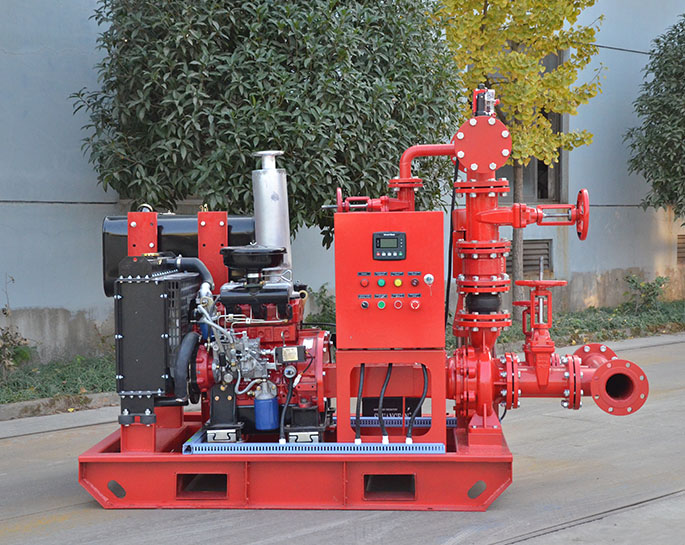Fire pump master and backup switching
In a fire protection system, having both a master fire pump and a backup (or secondary) fire pump is essential to ensure reliability and redundancy in case of primary pump failure. The master pump is the primary pump responsible for maintaining the required water pressure for fire suppression, while the backup pump serves as a fail-safe option in case the master pump becomes unavailable. Switching between the master and backup fire pumps should be designed to happen seamlessly to ensure continuous fire protection. Here's how the switching process typically works:
-
Normal Operation (Master Pump Active):
- During normal operation, the master fire pump is active and provides the required water flow and pressure for the fire protection system.
- Water pressure sensors and/or flow sensors continuously monitor the system to ensure that the desired pressure is maintained.
-
Master Pump Failure Detection:
- If the water pressure drops below the desired level due to a master pump failure or other issues, the system detects this and initiates a signal indicating a pump failure.
-
Automatic Transfer Switch (ATS):
- An Automatic Transfer Switch (ATS) is a critical component in fire pump switching. It automatically detects the master pump failure and triggers the switch to activate the backup pump.
- The ATS may also have built-in delay mechanisms to ensure that the backup pump doesn't start immediately to avoid false triggering due to momentary pressure fluctuations.
-
Backup Pump Activation:
- When the ATS determines that the master pump has failed, it sends a signal to start the backup pump.
- The backup pump's motor starts, and the pump begins providing water flow and pressure to the fire protection system.
-
Pressure Restoration and Monitoring:
- The backup pump operates until the desired water pressure is restored within the fire protection system.
- Pressure sensors and flow sensors continue to monitor the system to ensure that the backup pump is maintaining the required pressure.
-
Master Pump Restoration:
- Once the master pump issue has been addressed (e.g., repairs, maintenance), it can be manually or automatically reactivated.
- The ATS can be programmed to switch back to the master pump once it's confirmed that the master pump is operational again.
-
Manual Override:
- In some systems, there might be a manual override option to switch between the master and backup pumps. This can be useful in situations where manual intervention is preferred.
It's important to note that the switching mechanism and procedures can vary based on the specific fire protection system design, manufacturer recommendations, and local regulations. Fire pump systems are typically designed to meet the requirements of the National Fire Protection Association (NFPA) standards, which provide guidelines for designing, installing, and maintaining fire pump systems to ensure their reliability and effectiveness in protecting life and property.
Regular testing, maintenance, and training are crucial to ensure that the master and backup fire pumps, as well as the switching mechanisms, are functioning as intended. Fire protection professionals and facility managers should work closely with experts to design and maintain a fire pump system that meets safety standards and regulatory requirements.







